
Chemical Physics Reviews
Scope & Guideline
Fostering Collaboration in Chemical Physics
Introduction
Aims and Scopes
- Theoretical and Computational Chemistry:
The journal emphasizes the application of computational methods to explore molecular interactions and dynamics, providing insights into reaction mechanisms and material properties. - Nanomaterials and Nanotechnology:
A significant focus on the synthesis, characterization, and application of nanomaterials, particularly in energy, catalysis, and optoelectronic devices. - Photochemistry and Photophysics:
Research in this area includes studies on light-induced processes, such as photochemical reactions and energy transfer mechanisms, vital for solar energy conversion and photonic applications. - Electrocatalysis and Energy Storage:
The journal covers advancements in electrocatalytic materials and processes, particularly for energy conversion and storage technologies, such as batteries and fuel cells. - Materials Science and Engineering:
The interplay of chemical and physical properties in materials design, including the development of novel materials for various applications, including sensors and electronic devices. - Biophysical Chemistry:
Exploring the chemical principles underlying biological systems, including enzyme mechanisms and molecular interactions in biological contexts.
Trending and Emerging
- MXenes and Two-Dimensional Materials:
Increasing interest in MXenes and other two-dimensional materials, driven by their unique properties and potential applications in energy storage, catalysis, and electronics. - Data-Driven Approaches and Machine Learning:
An emerging trend towards integrating machine learning and data-driven methodologies into chemical research, enhancing predictive capabilities and optimizing material properties. - Ultrafast Science and Time-Resolved Techniques:
A growing focus on ultrafast spectroscopy and time-resolved techniques to probe transient states and dynamic processes at the molecular level. - Photocatalysis and Solar Energy Conversion:
Significant advancements in photocatalytic materials and processes for solar energy conversion, reflecting global energy sustainability efforts. - Interfacial and Surface Chemistry:
An increasing emphasis on the chemistry at interfaces, particularly in relation to catalysis, energy storage, and sensor development, highlighting its importance in material performance.
Declining or Waning
- Traditional Organic Chemistry:
Research centered on conventional organic synthesis and reactions appears to have diminished, likely due to a broader trend towards interdisciplinary approaches integrating materials science and nanotechnology. - Classical Thermodynamics:
There seems to be a decline in the focus on classical thermodynamic principles, as more studies emphasize statistical mechanics and quantum effects in chemical processes. - Basic Inorganic Chemistry:
Papers focusing solely on fundamental aspects of inorganic chemistry without a connection to broader applications or interdisciplinary research have become less frequent.
Similar Journals
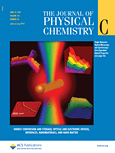
Journal of Physical Chemistry C
Pioneering innovative research in physical chemistry.The Journal of Physical Chemistry C, published by the American Chemical Society, stands as a pivotal resource in the realm of materials science and physical chemistry. With an impact factor reflecting its esteemed reputation, this journal showcases high-quality research spanning topics such as electronic, optical, and magnetic materials, as well as nanoscience and nanotechnology. Hailing from the United States, it operates without an open access model, yet its contributions are critical for advancing our understanding of surfaces, coatings, and films. Notably, the journal is classified in Quartile 1 (Q1) for several categories, underscoring its prominence in Physical and Theoretical Chemistry and related fields. Researchers, professionals, and students alike will find value in the comprehensive discussions and innovative research trends presented. The scholarly articles published from 2007 to 2024 not only drive forward scientific inquiry but also inform practical applications in various industries, making this journal an essential tool for anyone committed to excellence in the sciences.
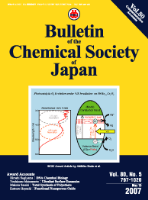
BULLETIN OF THE CHEMICAL SOCIETY OF JAPAN
Showcasing Excellence: A Nexus for Chemical ScholarshipBULLETIN OF THE CHEMICAL SOCIETY OF JAPAN, published by the esteemed Chemical Society of Japan, serves as a pivotal platform for the dissemination of cutting-edge research in the multifaceted field of chemistry. With an ISSN of 0009-2673 and an E-ISSN of 1348-0634, this journal has been integral in fostering the growth of chemical sciences globally since its inception in 1965. The journal holds an impressive Q2 ranking in the Chemistry (miscellaneous) category, indicating its relevance and influence within the academic community, as reflected by its Scopus rank of #104/408, placing it in the 74th percentile. Although it is not an open-access journal, its rich content, which spans a wide range of topics in general chemistry, remains highly valued by researchers, professionals, and students alike, affirming its crucial role in advancing both theoretical knowledge and practical applications in chemistry. As it converges towards 2024, the bulletin continues to uphold its commitment to excellence in scientific communication and research dissemination in Japan and beyond.

Cell Reports Physical Science
Elevating Research Impact in Diverse Scientific FieldsCell Reports Physical Science is a leading open-access journal published by Cell Press, based in the United States, that has quickly established itself as a pivotal platform for the dissemination of research in diverse scientific fields. Launched in 2020, this journal focuses on advancing knowledge in areas such as Chemistry, Energy, Engineering, Materials Science, and Physics and Astronomy. With an impressive impact factor, it is ranked Q1 across all major categories, demonstrating its high relevance and influence in the academic community. Notably, it enjoys a remarkable reputation, reflected in its Scopus rankings, positioning it within the top tiers of its respective fields. As an open-access journal, Cell Reports Physical Science ensures that research is freely accessible, promoting collaboration and innovation globally. Researchers, professionals, and students are encouraged to submit their groundbreaking work to contribute to the ever-evolving conversation in physical sciences.

SusMat
Fostering Interdisciplinary Approaches to SustainabilitySusMat is a pioneering open access journal published by WILEY, with an ISSN of 2766-8479 and E-ISSN of 2692-4552, dedicated to advancing knowledge in the field of sustainable materials and technologies. Launched in 2021, SusMat aims to provide a vibrant platform for researchers, professionals, and students from interdisciplinary backgrounds to explore and disseminate innovative materials and strategies that promote sustainability. With an emphasis on high-quality, peer-reviewed research, this journal contributes to the growing body of literature essential for addressing contemporary environmental challenges. Furthermore, the open access format enhances accessibility and dissemination of knowledge, encouraging broader engagement and collaboration within the scientific community. Discover the future of sustainable materials at SusMat, where impactful research meets global sustainability goals.

STRUCTURAL CHEMISTRY
Fostering Excellence in Chemical Structure ResearchSTRUCTURAL CHEMISTRY is a premier journal published by SPRINGER/PLENUM PUBLISHERS, dedicated to advancing the study and understanding of the structural aspects of chemistry. With an ISSN of 1040-0400 and an E-ISSN of 1572-9001, this journal serves as a critical resource for researchers and professionals engaged in the fields of Condensed Matter Physics and Physical and Theoretical Chemistry. Since its inception in 1990, it has become an essential platform for disseminating high-quality research, featuring articles that explore innovative methodologies, experimental techniques, and theoretical frameworks. As evidenced by its Scopus rankings, including #192 in Condensed Matter Physics and #101 in Physical and Theoretical Chemistry, the journal occupies a respected position within the academic community, promoting interdisciplinary collaboration and insight. While it operates on a traditional subscription model, the journal continues to broaden its reach to foster knowledge exchange among scholars worldwide. With a commitment to excellence and relevance, STRUCTURAL CHEMISTRY remains a vital contributor to the scientific dialogue surrounding chemical structure and its myriad implications across various scientific disciplines.

Computational and Theoretical Chemistry
Driving Innovation in Theoretical and Computational MethodsComputational and Theoretical Chemistry, published by ELSEVIER, stands at the forefront of interdisciplinary research in the realms of computational chemistry, theoretical physics, and biochemistry. With its ISSN 2210-271X and E-ISSN 1872-7999, the journal has established a significant presence in the academic community since its inception. Covering innovative computational methodologies and theoretical advancements, it addresses critical issues in condensed matter physics and molecular biochemistry, providing a rich resource for scholars and industry professionals alike. The journal enjoys a respectable impact factor and ranks notably in several Scopus categories, making it a vital platform for disseminating high-quality research. It adopts an open-access model, facilitating wider readership and engagement, which is essential for fostering collaborative innovations in the scientific landscape. As it continues to evolve from 2011 to 2024, Computational and Theoretical Chemistry is committed to advancing knowledge and promoting insightful discussions within the scientific community.
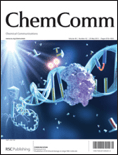
CHEMICAL COMMUNICATIONS
Bridging disciplines with critical insights and discoveries.Chemical Communications, published by the esteemed Royal Society of Chemistry, is a prominent journal within the field of chemical science, focusing on the dissemination of cutting-edge research in a variety of sub-disciplines including catalysis, materials chemistry, and electronic materials. Operating without an open access model, this journal provides critical insights from contributors around the globe, enhancing our understanding of complex chemical interactions and innovative applications. Ranked in the top quartile for several categories such as Ceramics and Composites, and Metals and Alloys, Chemical Communications boasts impressive Scopus rankings, securing strong positions across multiple fields and showcasing its influence within the scientific community. The journal is committed to advancing knowledge and fostering collaboration among researchers, professionals, and students, making it an invaluable resource for those looking to stay abreast of the latest advancements in chemistry and materials science. With a publication history dating back to 1965 and continuing into 2024, its rich archive serves as a vital repository of chemical research and development.
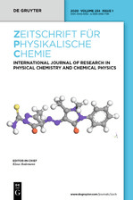
ZEITSCHRIFT FUR PHYSIKALISCHE CHEMIE-INTERNATIONAL JOURNAL OF RESEARCH IN PHYSICAL CHEMISTRY & CHEMICAL PHYSICS
Navigating the Landscape of Physical ChemistryZEITSCHRIFT FUR PHYSIKALISCHE CHEMIE-INTERNATIONAL JOURNAL OF RESEARCH IN PHYSICAL CHEMISTRY & CHEMICAL PHYSICS, published by WALTER DE GRUYTER GMBH, is a highly regarded platform for researchers in the field of physical chemistry and chemical physics. With an ISSN of 0942-9352 and an E-ISSN of 2196-7156, this journal serves as a vital resource for the dissemination of original research, critical reviews, and insightful discussions that span theoretical and experimental investigations. Recognized for its quality, it holds a Q2 classification within the 2023 quartiles of Physical and Theoretical Chemistry and ranks 72nd out of 189 in the Scopus database, placing it in the 62nd percentile. The journal’s extensive publication history, originating from 1943, showcases its long-standing commitment to advancing the understanding of complex chemical phenomena. Although it currently does not offer open-access options, it continues to attract contributions from leading experts worldwide, making it essential reading for professionals, researchers, and students dedicated to pushing the frontiers of chemical science. The journal is located in Berlin, Germany, at Genthiner Strasse 13, D-10785 Berlin, Germany.
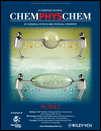
CHEMPHYSCHEM
Connecting Concepts: Where Chemistry Meets PhysicsCHEMPHYSCHEM, published by WILEY-V C H VERLAG GMBH in Germany, stands as a pivotal resource for researchers and professionals in the fields of Atomic and Molecular Physics, as well as Physical and Theoretical Chemistry. With a commendable impact across its converged years from 2000 to 2024, the journal is categorized in the second quartile (Q2) for both aforementioned fields according to the 2023 metrics, underscoring its significance in advancing scientific dialogue and research. CHEMPHYSCHEM is committed to disseminating high-quality, peer-reviewed research articles that delve into the intricate interplay between chemistry and physics, making it an essential read for students and experts alike. The journal does not currently offer open access options, allowing for focused scholarly discussions that cater to the academic community's needs. As reflected in its Scopus rankings, CHEMPHYSCHEM maintains respectable standings, ranking #84/224 and #90/189 in its respective categories, demonstrating its commitment to high-impact research and innovation.
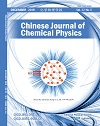
CHINESE JOURNAL OF CHEMICAL PHYSICS
Fostering Collaboration in the World of Chemical PhysicsChinese Journal of Chemical Physics, published by the Chinese Physical Society, serves as a pivotal platform for advancing the field of chemical physics, encompassing groundbreaking research and innovative methodologies since its inception in 2000. With an ISSN of 1674-0068 and E-ISSN of 2327-2244, the journal has established itself within the academic community, reflected in its 2023 classification as Q3 in Physical and Theoretical Chemistry and a Scopus rank of #142 out of 189, representing the 25th percentile in this competitive field. Although it does not currently operate as an open-access publication, its commitment to disseminating pivotal scientific research continues to attract scholars and professionals alike. The journal aims to bridge the gap between theoretical principles and practical applications in chemical physics, thereby fostering collaboration and innovation. By contributing significantly to the discourse in this dynamic domain, the Chinese Journal of Chemical Physics remains an essential resource for researchers, professionals, and students eager to stay abreast of contemporary developments.